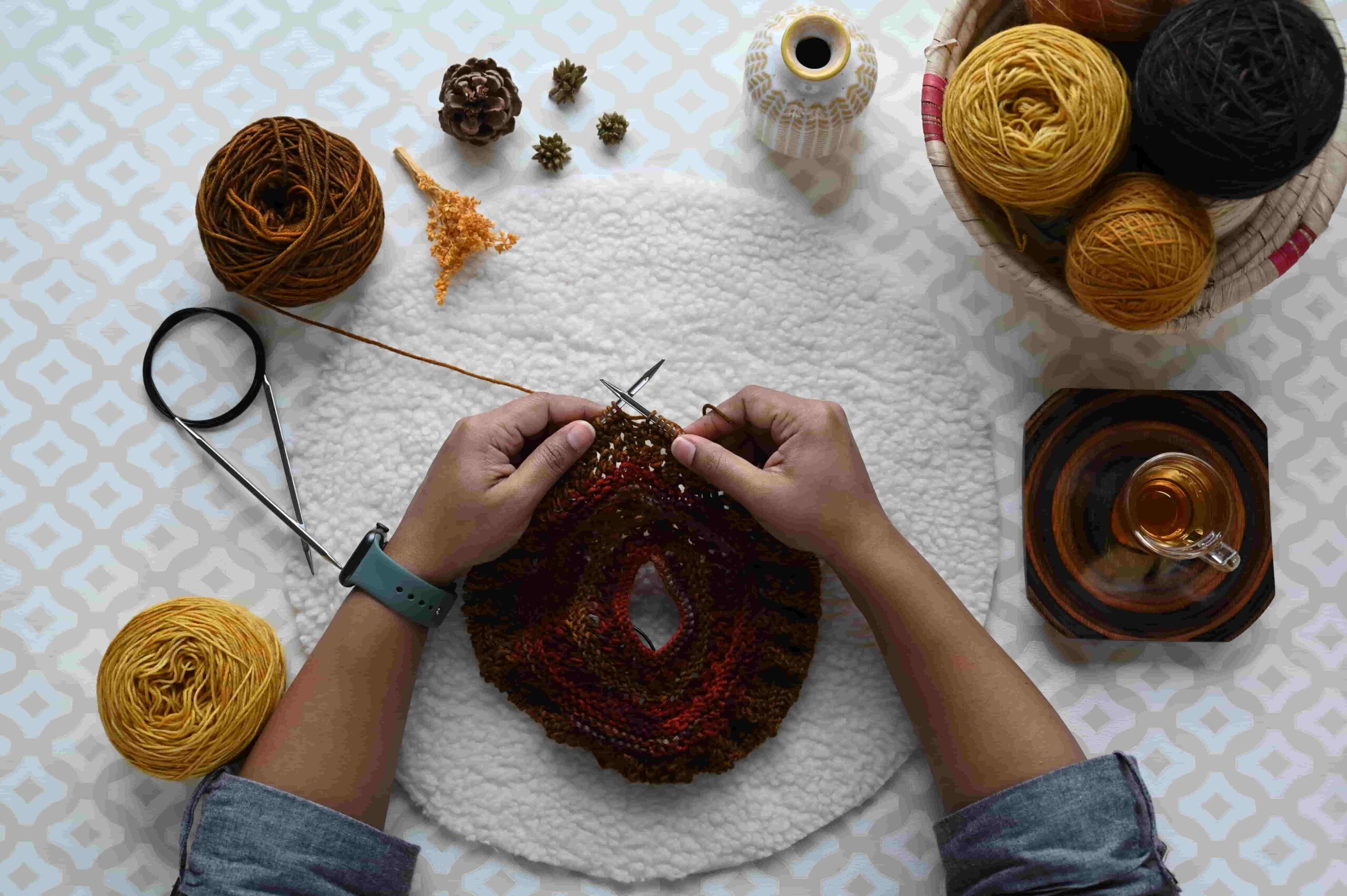
Circular knitting needles are versatile companions for knitters, unlocking the potential to craft a collection of projects effortlessly. These magical tools transcend the limitations of traditional single pointed needles, enabling the creation of both round and flat garments with grace and ease. Yet, the key to achieving the perfect knitting results lies in selecting the right circular needle size.
In today’s blog, we will empower you with the knowledge of crucial factors to consider when
selecting the right circular needle size for your knitting pursuits.
Yarn Weight:
The weight of the yarn you plan to use is one of the most important considerations when choosing a circular needle size. This is important because different yarn weights require different needle sizes to get the desired gauge and tension. By conferring the yarn label, choosing circular knitting needles that fall within the recommended needle size range is best.
- For lace or fingering weight yarns, it is recommended to opt for smaller needle sizes, typically ranging from US 000 to US 3.
- Sport and DK weight yarns pair well with medium-sized needles, generally ranging from US 4 to US 6.
- For worsted and aran-weight yarns, medium- to large-sized needles, ranging from US 7 to US 9, work best.
- Larger needle sizes, starting from US 10 and above, are suitable for bulky and super bulky yarns.
Project Type:
Additionally, the type of project being undertaken is a crucial consideration. Different projects may require varying needle sizes to achieve the desired drape, stitch definition, and overall aesthetic.
- Sweaters and garments often benefit from a needle size that matches the yarn weight for a balanced fabric.
- Lace projects may require smaller needles to highlight intricate stitch patterns.
- Blankets or scarves might call for larger needles to create an open and airy fabric.
Desired Fabric Drape:
The needle size influences the drape of your finished project. Smaller needles create a tighter fabric with less drape, while larger needles produce a looser, more flowing fabric.
- Smaller needles result in a tighter fabric with less drape, making them suitable for structured garments or items that require stability.
- Opt for larger needles to create a looser, more flowing fabric, ideal for achieving a relaxed and fluid drape, as seen in shawls or oversized sweaters.
Personal Tension:
Personal tension, or knitting style, is another crucial factor. Every knitter has their unique tension – some naturally knit looser, while others knit more tightly. It is important to pay attention to your knitting style and adjust the needle size accordingly to achieve the recommended gauge in your pattern.
- If your stitches are too tight, consider using larger needles.
- If your stitches are too loose, switch to smaller needles.
Circular Needle Material:
Circular needles are available in various materials, including metal, wood, and plastic, each with characteristics that influence the knitting experience.
- Metal needles are smooth and provide fast knitting but can be slippery.
- Wooden needles offer a warmer feel and a bit of grip, making them suitable for slippery yarns.
- Plastic needles are lightweight and warm, with a slightly sticky surface that aids in controlling yarn.
- Consider your preference and the yarn you use when choosing the needle material.
Circular Needle Selection: Interchangeable Knitting Needles vs. Fixed Circular Needles for Ideal Projects
When there is a need for circular needle choices, consider the project scope—interchangeable or fixed. Interchangeable needles offer versatility, allowing you to change cord lengths and needle sizes, perfect for varied projects. They’re a cost-effective, space-saving option. On the other hand, fixed circular needles are durable and ready-made, ideal for projects with consistent sizes. Assess your knitting needs, opting for interchangeable for versatility and adaptability or fixed circulars for simplicity and durability, ensuring your circular needle selection aligns seamlessly with the demands of your knitting initiatives.
Choosing the right circular knitting needle size is a crucial step in the knitting process that can significantly impact the outcome of your projects. Considering all these factors, you can make informed decisions and enhance your knitting experience. Experimenting with different needle sizes and keeping track of your preferences will ultimately help you become a more versatile and skilled knitter.

